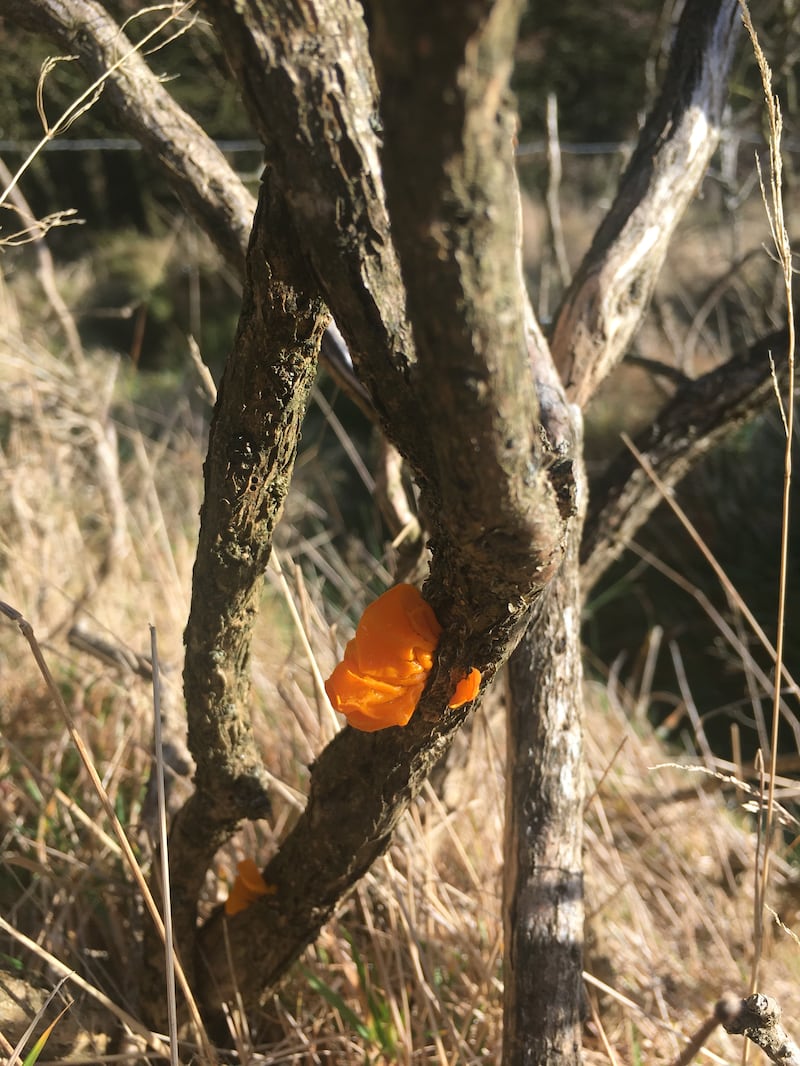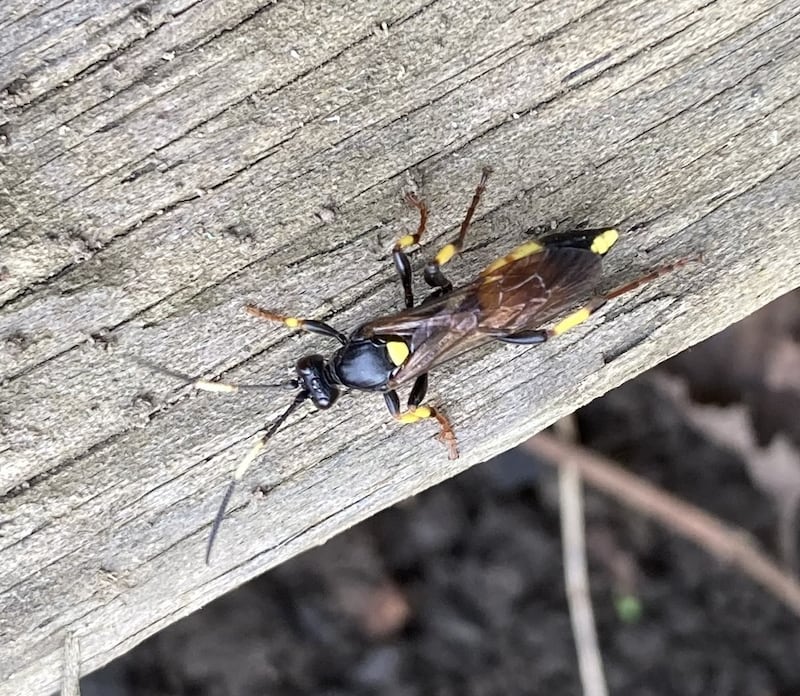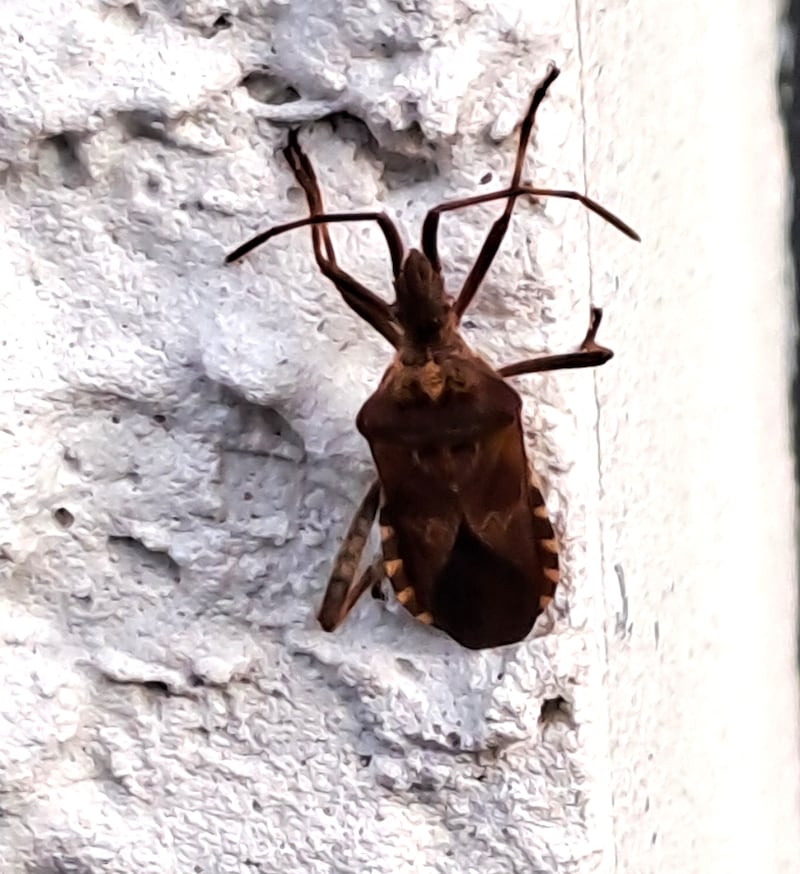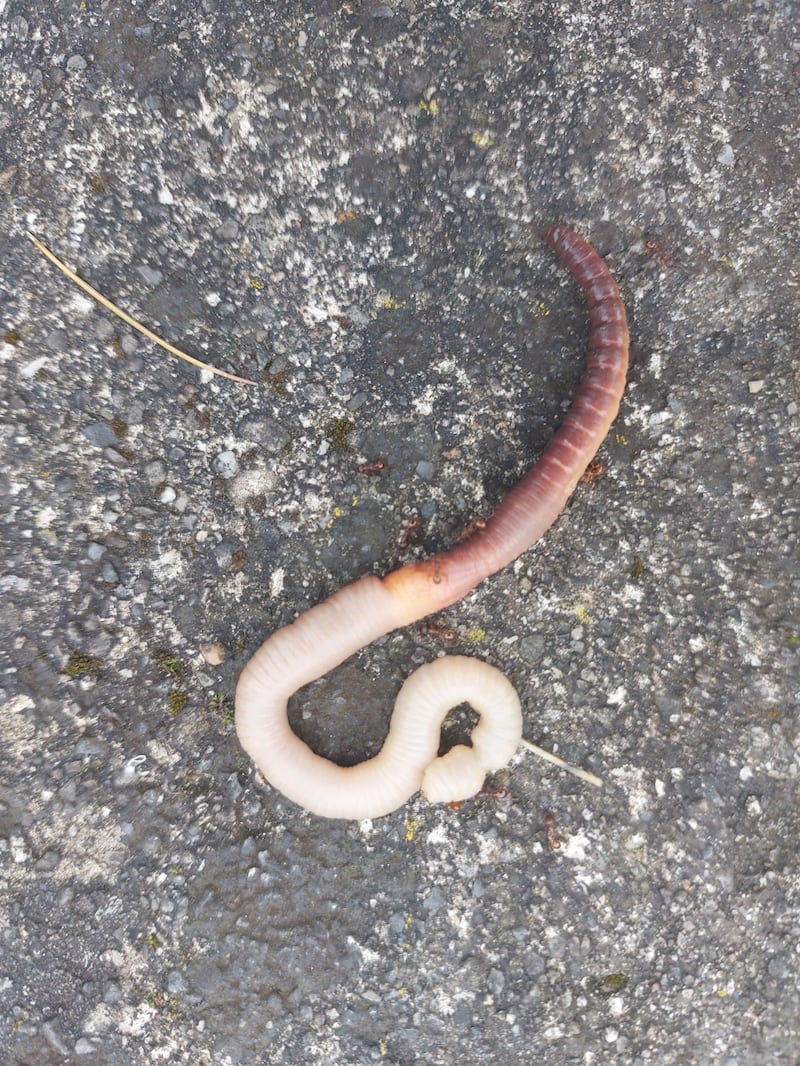I saw this tiny little bird happily feeding in the rosemary bush recently. Is it a goldcrest? Dairine Sheridan, Co Wexford
It is. The goldcrest is the smallest bird in Europe and weighs just 6g. It feeds on insects and is inspecting all the leaves of your rosemary bush for aphids and the like. In winter, goldcrests from Britain and northern Europe come here to take advantage of our milder winters. Nesting season is from mid-April to mid-June, when two broods of six to nine young are reared in a hanging cup-shaped nest, built from mosses and lichens and held together with spiders’ webs.

I saw this coloured deposit on withered gorse on the lower slopes of Three Rock Mountain in mid-January. Can you identify it? Kevin Cullen, Co Dublin
This is a fungus called Tremella mesenterica, the Yellow Brain fungus. This jelly-type fungus forms bright yellow to orange-coloured blobs on dead deciduous branches, and is often seen on gorse. It becomes more orange coloured as it dries out. It is widespread and common, and occurs all year.
This insect clung to the windscreen of my car for more than a kilometre. Readers’ nature queries
Honey buzzards at the Strait of Messina: Migrant birds and one of Europe’s great ‘bottlenecks’
Razorbills strike back after Star Wars takeover of Skellig Michael
I took a photo of a bird swallowing an eel head first in Dublin

I was out in the garden last week and came across this little fellow and found him unusual, I was wondering if he’s of any interest. Michael Connell, Dublin
This is an ichneumonid wasp – a parasitic insect whose grubs grow up inside in the caterpillars of moths and butterflies, eventually causing their death. I am sure this one is of considerable interest to the moths in your garden as it is a female Ichneumon stramentor – a parasite of large yellow underwings and setaceous Hebrew moths. It hibernates as an adult, so this is one newly emerged and on the prowl for caterpillars into which it will lay eggs.

Noticed this little guy looking the worse for wear, hopping along the path close to Tolka Valley Park. It looks more like a chick than a robin. What could have happened to it? Margaret Rogers, Dublin
It certainly has been in the wars all right. Male robins are particularly aggressive birds and will fight with other males – sometimes to the death- over territory. So this one could have been embroiled in land wars. It is not a chick because male robins would attack their own young if they sported the same glowing red feathers, therefore juveniles have scaly brown markings and spots instead, for a period after leaving the nest.

I spotted this strange insect on the wall of our house near some potted plants this week. Can you identify it for me, please? Marianne Lynch, Co Donegal
This is the western conifer seed bug, Leptoglossus occidentalis. The white W-shaped markings on each wing are the diagnostic identification features, as well as the flanged second segment of the back legs (although these are not evident in your photograph). This species is native to western North America but has rapidly spread over much of Europe. It was first recorded in Ireland in 2010 in a hardware store in Wexford. Nymphs and adults feed on the sap from buds and seeds of conifers.

What is going on here – a brown and white worm at a house in Ballyboe in Rathmullan? Dave Kearney, Co Donegal
This earthworm has suffered a major trauma to its body just below the clitellum – the orange saddle – and is dead from there on, hence the white colour. The red part contains the brain and seven hearts and is still living. Cutting worms in half does not produce two worms, just a dead tail part and a living top part with a very sore end.
Please submit your nature query, observation, or photo with a location, via www.irishtimes.com/eyeonnature




